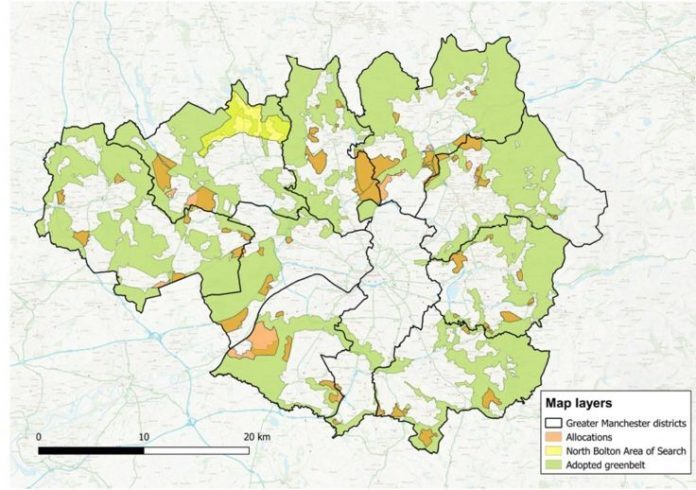The publication of the plans for Greater Manchester’s Spatial Planning (GMSF) will now not be published until October as it is revealed that projected population growth across the region is falling.
The plans are meant to solve the housing crisis by ensuring Greater Manchester has the right land available in the right places to deliver the homes and job it needs over the next 20 years, and will identify the new infrastructure required to achieve this.
Official population estimates, published last month, showed slower projected growth in Greater Manchester’s population.
These figures inform the Sub National Household Projections (SNHP) which are expected in September 2018. The lower population growth is likely to mean there will be lower household growth change in the household projections.
Greater Manchester Leaders agreed at June’s GMCA meeting that a delay to the Spatial Framework consultation would allow the Greater Manchester Combined Authority to make sure that the GMSF uses the most up-to-date figures to plan for the right number of new homes in the city-region.
Leaders also agreed that more information on the Spatial Framework timeline will be brought forward at the July GMCA meeting.
The original plans caused controversy as it included options to build on green belt sites at Pilsworth, Carrington, Cheadle Hulme and Ashton Moss, some green belt building said the plan is “essential” to keep up with the city region’s growth.
Mayor Andy Burnham ripped up the original plans and undertook a new study when he was elected last year and the results were due to be published in June
Greater Manchester’s lead for housing, planning and homelessness, and City Mayor for Salford, Paul Dennett, said: “The Greater Manchester Spatial Framework gives us the chance to realise our goal of making this city-region a place where everyone can grow up, get on and grow old.
“Together we can create a plan that builds the homes we need, enhances the protection of our valued green spaces and helps us create an economy from which everyone in Greater Manchester can benefit.
“We are taking great care to ensure that all relevant evidence is taken in to account as we complete the next draft of the Framework. This plan has to be is fit for Greater Manchester’s future.
“New population projections published last month predicted a slower future growth in Greater Manchester’s population. As a result, we now expect there to be lower growth in Greater Manchester’s household projections that are due to be published in September 2018.
“These official projections help us to know what housing need we should be planning for in the Spatial Framework. Given this, Leaders have now decided to undertake further work to ensure the implications of these figures are understood and fully realised in the next draft of the Spatial Framework.
“This has not been an easy decision but as Greater Manchester Leaders we are determined to make sure this plan is the right one and that people in Greater Manchester have the most up to date facts ahead of the Spatial Framework consultation.”
Mayor of Greater Manchester, Andy Burnham, said: “The Spatial Framework is critical to the future of Greater Manchester and we need to get this plan right. That is why Greater Manchester Leaders have taken the difficult decision to delay the Spatial Framework consultation until October this year.
“This will allow us to make sure that the most up to date official figures inform this plan. We have tried to be as open and transparent as possible throughout this process. I hope people will bear with us as we use these new projections to ensure we’re planning for the right number of new homes in Greater Manchester.
“We will be bringing a substantial update on the plan for the Spatial Framework consultation and timeline to July’s GMCA meeting so that people in Greater Manchester are kept up to date and involved in this process.”







